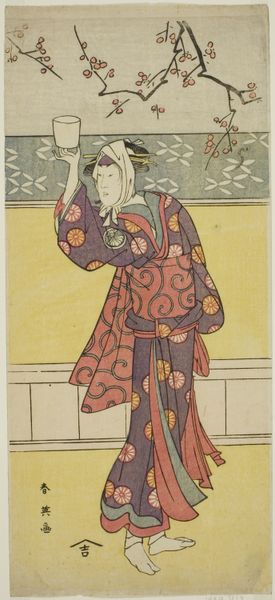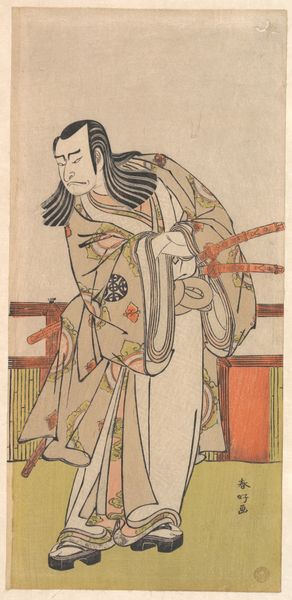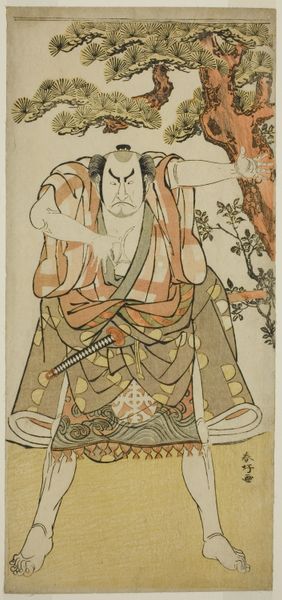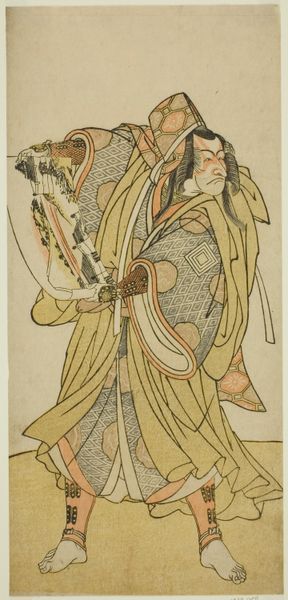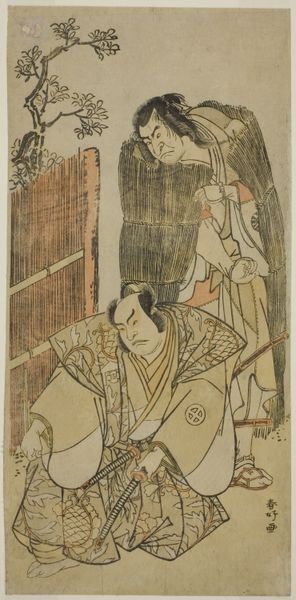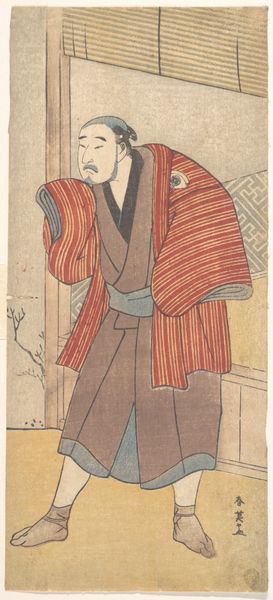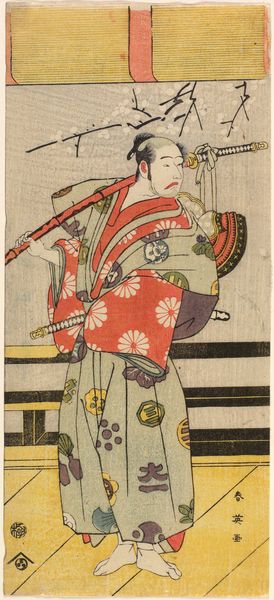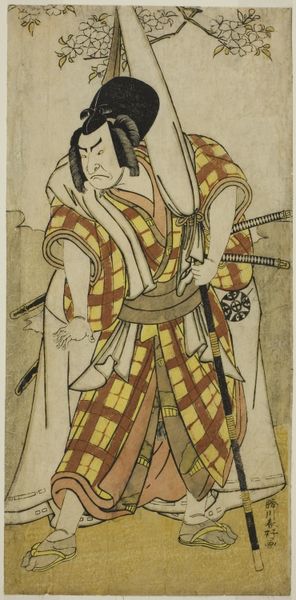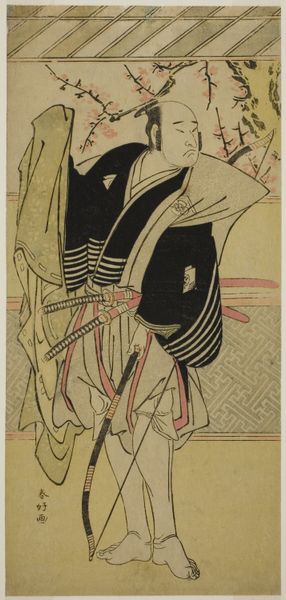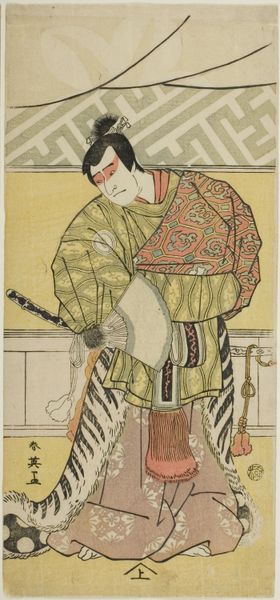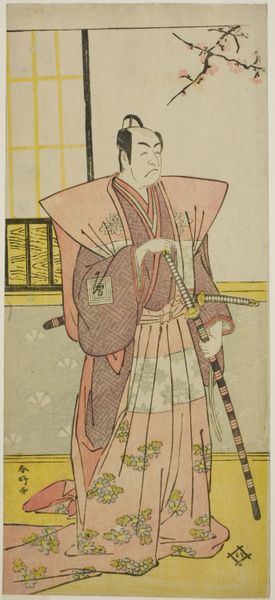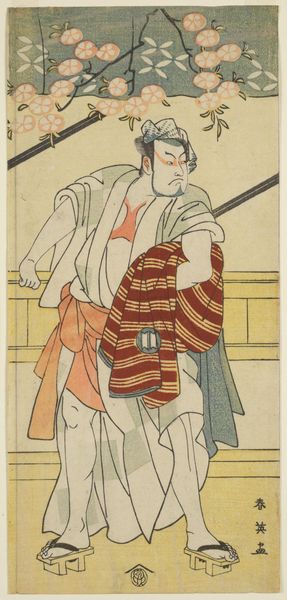
The Actor Ichikawa Monnosuke II as Mori no Rammaru in "The Banquet," the Final Act in Part One of the Play Kanagaki Muromachi Bundan (Muromachi Chronicle in Kana Script), Performed at the Ichimura Theater from the First Day of the Eighth Month, 1791 c. 1791
0:00
0:00
print, woodblock-print
#
portrait
# print
#
caricature
#
asian-art
#
caricature
#
ukiyo-e
#
woodblock-print
#
genre-painting
Dimensions: 32 × 14.4 cm (12 5/8 × 5 3/4 in.)
Copyright: Public Domain
Editor: Here we have Katsukawa Shun'ei's woodblock print from 1791, "The Actor Ichikawa Monnosuke II as Mori no Rammaru...". It's quite striking; the actor's pose feels tense, and the colors, though muted, create a very theatrical effect. What strikes you when you look at this, from a historical perspective? Curator: What immediately jumps out is the connection to kabuki theatre and its crucial role in Edo period urban culture. These prints, ukiyo-e, weren't just art, they were advertising. Think of them as posters promoting specific actors and plays, feeding the intense celebrity culture surrounding kabuki. This print celebrates Ichikawa Monnosuke II. What does the image tell us about his role and the societal view of kabuki at the time? Editor: It feels like more than just advertisement, though. It's elevated. The detail in his costume, the intense expression - doesn't it hint at something more substantial? Curator: Absolutely! The artistry reflects the growing sophistication of the urban merchant class, the patrons of kabuki. Their increasing economic power fueled the demand for elaborate performances and, subsequently, for beautifully crafted images that captured the essence of those performances. Ukiyo-e, therefore, became a crucial tool for self-fashioning and the articulation of a shared cultural identity within this rising social group. How does that information shape your perception? Editor: That's a fascinating perspective. It connects the art directly to broader social shifts – a rising middle class and the theatre culture they fostered. The print becomes not just an image of an actor, but a document of societal transformation. Curator: Precisely! And this makes it valuable to analyze the socio-political dynamic behind it! Editor: Thinking about the context makes it even more captivating! Curator: Indeed! Now you see what historical analysis brings to it.
Comments
No comments
Be the first to comment and join the conversation on the ultimate creative platform.
